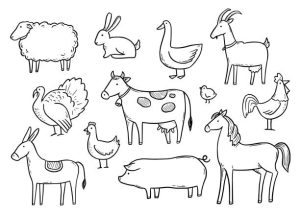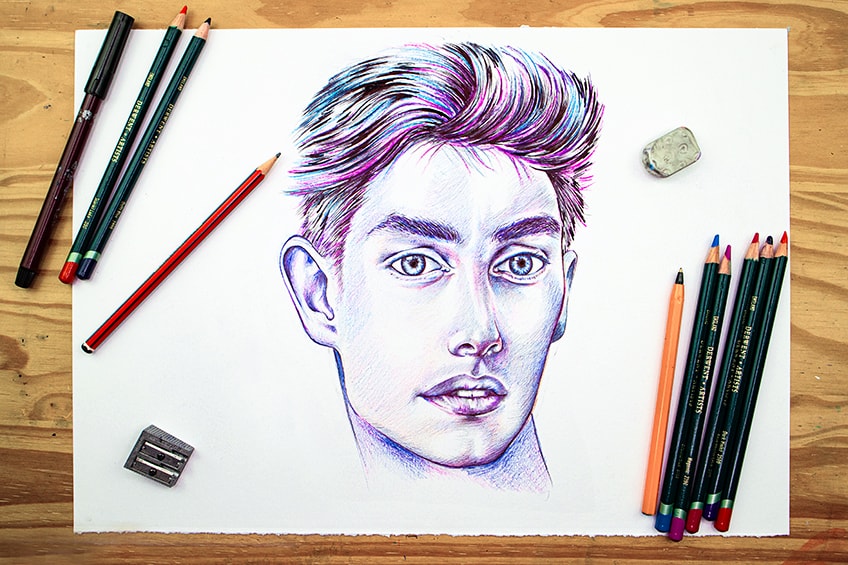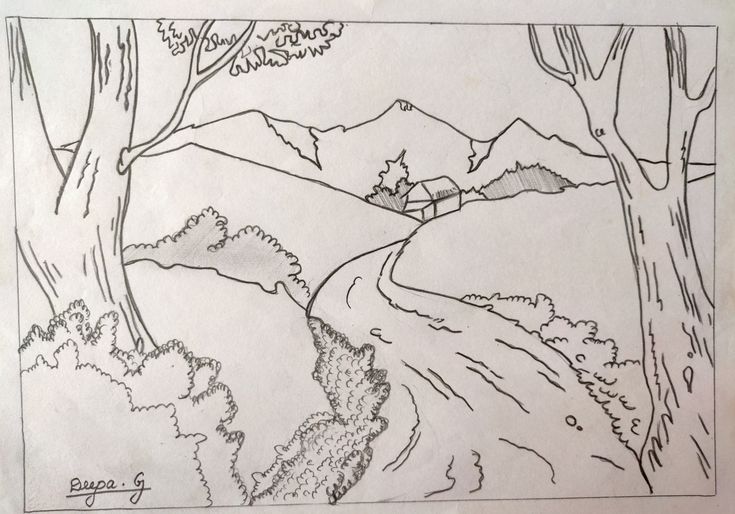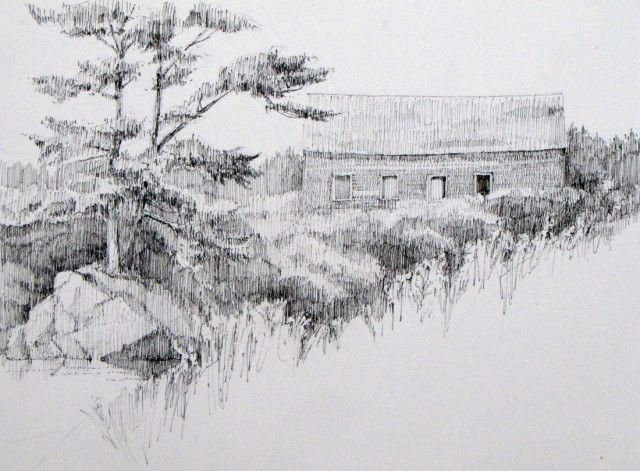Creating animal drawings allows artists to capture the beauty and diversity of the animal kingdom through the stroke of a pencil or the splash of colors on a canvas. Each drawing becomes a visual celebration of the intricate details that make each species unique, from the majestic roar of a lion to the delicate flutter of a butterfly’s wings. Artists often strive to portray not only the external anatomy but also the essence and personality of the animals they depict.

Exploring Animal Drawings
Exploring animal drawings is a fascinating journey into the world of art and nature. From prehistoric cave paintings to contemporary photorealistic sketches, animals have captivated artists for centuries.
There are endless possibilities when it comes to animal drawings. Some artists focus on capturing the realistic anatomy and form of animals, while others use animals as symbols or metaphors in their work. Some popular styles of animal drawing include:
- Realistic: This style aims to create a lifelike representation of an animal, often using detailed shading and attention to anatomy.
- Cartoon: Cartoon animals are often exaggerated and simplified, making them appealing to children and adults alike.
- Abstract: Abstract animal drawings focus on shapes, lines, and colors rather than on realistic representation.
No matter what your style or skill level, there are animal drawing projects that you can enjoy. If you’re just getting started, you can try drawing simple shapes and lines to represent animals. Once you’re more comfortable, you can try adding details and shading to your drawings.
Here are some tips for drawing animals:
- Start with basic shapes: When drawing an animal, start by breaking it down into simple shapes, such as circles, ovals, and triangles. This will help you to get the proportions correct.
- Pay attention to anatomy: If you want to draw realistic animals, it’s important to learn about their anatomy. This will help you to create drawings that are accurate and believable.
- Use reference photos: Reference photos can be a great help when drawing animals. You can find photos online or in books.
- Practice, practice, practice: The more you practice, the better you will become at drawing animals. Don’t be afraid to experiment and make mistakes.
I hope this gives you a starting point for exploring the world of animal drawings. With a little practice, you’ll be creating amazing artwork in no time!
Here are some additional resources that you may find helpful:
- Books: “Drawing Animals” by Barbara Thomson, “Animal Anatomy for Artists” by Ellen Sneddon
- Websites: drawabox.com, proko.com

A Journey Through Animal Sketches
Embark with me on a captivating adventure through the vibrant world of animal sketches! Forget stuffy museums and predictable nature documentaries – this journey unfolds on textured paper, brought to life by charcoal strokes and delicate ink lines.
Our odyssey begins in the dappled sunlight of a sun-drenched forest. A charcoal sketch of a majestic stag emerges from the shadows, its antlers reaching towards the heavens like gnarled branches. Every ripple of muscle, every curve of its proud gaze, speaks of ancient wisdom and untamed wilderness.
Next, we traverse the shimmering expanse of a savanna, where a swift cheetah leaps across the page in a flurry of graphite. Its elongated limbs stretch in a blur of motion, capturing the raw power and primal grace of these apex predators.
But our path doesn’t always lead to grand spectacles. We may stumble upon a tiny hummingbird, its iridescent feathers rendered in a symphony of colored pencils, each shimmering detail whispering of delicate beauty. Or perhaps, we’ll encounter a stoic owl perched on a branch, its watchful eyes captured in pen and ink, conveying an air of timeless mystery.
As we delve deeper, the boundaries between artist and animal blur. A playful otter, rendered in loose, expressive strokes, seems to wink from the page, inviting us to join its whimsical frolic. A melancholy wolf, its howl etched in charcoal lines, evokes a sense of longing and solitude, reminding us of the interconnectedness of all living things.
This journey isn’t merely about observing; it’s about feeling. Each sketch pulsates with the artist’s passion, their awe for the animal kingdom translated into graphite dust and ink smudges. We see not just fur and feathers, but the indomitable spirit of a lioness protecting her cubs, the playful curiosity of a puppy exploring its world, the quiet dignity of an aging elephant etched with the scars of time.
This is a journey without a map, where each turn reveals a new wonder. We may encounter a whimsical bestiary of mythical creatures, their fantastical forms born from the artist’s imagination, or stumble upon a scientific study of anatomy, each muscle and bone meticulously rendered with precision.

The Magic of Animal Portraits
The magic of animal portraits resides in their ability to transcend mere representation and capture the very essence of a creature’s soul. These are not just likenesses, but windows into the vibrant inner world of our animal companions and wild counterparts.
Imagine gazing into the wise, ancient eyes of a chimpanzee rendered in charcoal, its wrinkles tracing a lifetime of stories untold. Or feeling the mischievous glint in a fox’s amber gaze, captured in a watercolor’s fluid movement. These portraits hold the power to transport us into their world, to bridge the gap between species and feel the kinship that binds us all.
But the magic goes beyond realism. A splash of vibrant colors can transform a simple dog portrait into an explosion of joy, its tail wagging off the canvas. Or a few bold lines can distill the regal spirit of a lion into a minimalist masterpiece, each stroke resonating with raw power. The artist’s vision imbues the portrait with a unique perspective, revealing the animal’s personality, emotions, and even their dreams.
These portraits become talismans, whispering stories of loyalty, bravery, and unyielding love. They remind us of the simple pleasures of a cat basking in a sunbeam, the fierce protectiveness of a mother bear, or the playful exuberance of a puppy discovering the world. They evoke emotions we sometimes forget, emotions that connect us to the natural world and to each other.
The magic also lies in the unexpected. A portrait of a bat, often feared and misunderstood, can reveal its delicate beauty, its wings outstretched like stained glass windows. A close-up of a spider’s mesmerizing eyes can dispel anxieties and spark curiosity. These portraits challenge our preconceived notions and invite us to appreciate the wonder in unexpected places.
So, when you encounter an animal portrait, don’t simply glance and move on. Take a moment to truly see it. Let the artist’s magic work its spell, transport you into the animal’s world, and feel the pulse of life that connects us all. You might just discover a newfound appreciation for our animal companions

Bringing Animals to Life on Canvas
the alchemy of transforming canvas into a vibrant playground for the animal kingdom! Bringing animals to life on canvas is a dance of observation, inspiration, and technique, where brushes waltz with pigments to sing the praises of our feathered, furred, and scaled companions.
Let’s paint with broad strokes first. Imagine a canvas teeming with possibilities. Will you channel the stoic grace of a mountain lion in stark, contrasting shades, or capture the playful frolicking of otters in a joyous splash of watercolors? Perhaps you’ll delve into the underwater realm, where iridescent fish scales shimmer with pearlescent glazes, or ascend to the skies with an eagle’s keen gaze rendered in photorealistic detail.
But realism isn’t the only path to life on canvas. Animals can be whimsical muses, too. Think cartoon elephants dancing on rainbows, or mythical creatures like griffins guarding hidden forests. Let your imagination take flight, fueled by childhood wonder and folklore’s enchanting tapestries.
Speaking of technique, each medium whispers its own secrets. Oil paints may lend themselves to the majestic sweep of a galloping stallion, while delicate charcoal sketches can capture the soulful gaze of a stray cat nestled in a moonlit alley. Acrylics might pulsate with the vibrant energy of a coral reef, while watercolors evoke the ethereal beauty of a butterfly’s wings.
Don’t forget the power of texture! Rough burlap can add a raw edge to a wild beast’s portrait, while smooth gessoed canvas becomes the perfect stage for a sleek panther’s slink. Even found objects can join the party – feathers glued to the canvas might bring a bird closer to flight, while sand sprinkled on the page evokes the arid plains a lion calls home.
But remember, dear artist, the magic truly lies in capturing the essence, not just the form. Observe your animal subjects – the playful tilt of a puppy’s head, the wise crinkle around an old dog’s eyes, the fierce determination of a tiger on the hunt. These are the details that breathe life into your canvas, that make the viewer feel the animal’s heartbeat through the paint.

The Beauty of Animal Expressions
the captivating language of animal expressions! Beyond fur and feathers, eyes and limbs, lies a rich tapestry of emotions woven through twitches, flicks, and postures. Observing these nuanced expressions offers a glimpse into the souls of our fellow creatures, a silent conversation painted in the language of nature.
Imagine a chimpanzee, its wrinkled face splitting into a wide grin, revealing gleaming teeth – not a snarl of threat, but the infectious joy of playful camaraderie. Or picture a wise old owl, its amber eyes narrowed in contemplation, feathers fluffed in regal disdain, hinting at secrets whispered on the wind. Even the subtlest shifts can speak volumes – a dog’s floppy ears perked with anticipation, a cat’s tail twitching with curiosity, a horse’s nostrils flaring with alarm – each a brushstroke in the portrait of their inner world.
These expressions transcend mere communication. They spark empathy, drawing us into their orbit. A whimper of vulnerability from a lost puppy tugs at our heartstrings, while a mother bear’s fierce growl in defense of her cubs inspires awe and respect. These nonverbal dialogues remind us of the deep connections that bind us to all living creatures, forging a bridge of understanding across the chasm of species.
But the beauty of animal expressions lies not just in their emotional potency, but also in their artistry. The graceful ballet of a peacock’s fan, the synchronized leap of a dolphin pod, the hypnotic sway of a snake basking in the sun – each a performance staged by nature, a kaleidoscope of movement and form that speaks to the inherent elegance of the animal kingdom.
And let us not forget the element of surprise! A playful marmoset might erupt in a flurry of somersaults, a stoic rhino engage in a mud-wrestling session, a tiny hummingbird hover mid-air, its iridescent wings humming a silent symphony. These unexpected delights remind us that the animal world is a constant source of wonder, forever holding secrets waiting to be unraveled.
So, the next time you encounter an animal, open your eyes and tune your heart to the silent eloquence of their expressions. Watch the subtle dance of whiskers, the twitch of an ear, the tilt of a head. In these seemingly insignificant gestures lies a hidden language, a window into their lives
Imaginative Animal Drawings
Let’s dive into the fantastical realm of imaginative animal drawings, where creativity has no boundaries and anything is possible! Forget about rules and realism, and unleash your inner Dr. Seuss to create creatures that would make even Lewis Carroll blink in amazement.
Here are some sparks to ignite your imagination:
- Hybrid Havoc: Combine familiar features of different animals in unexpected ways. Imagine a lumbering bear with wings of a majestic eagle, soaring through a sky-high forest. Or a sleek dolphin with the fur of a tiger, patrolling the depths of an undersea jungle.
- Color Explosion: Ditch the browns and grays! Give your creature scales that shimmer in neon hues, fur that pulsates with bioluminescent light, or feathers that change color like a chameleon on a rainbow diet.
- Gadget Galore: Equip your animal with fantastical tools and gadgets. Maybe a rabbit carries a jetpack to hop between moon craters, or a turtle wears a propeller helmet to explore the clouds. Let the possibilities of steampunk or futuristic tech infuse your drawings.
Here are some tips to bring your creations to life:
- Start with rough sketches: Don’t be afraid to experiment! Doodle, play with shapes, and let your pencil dance freely until you find a design that sings to you.
- Focus on details: Once you have the basic form, add those quirky details that make your creature unique. Glowing antennae, feathered tails, or maybe even extra limbs – let your imagination run wild!
- Consider the environment: How does your creature interact with its world? Does it climb through bioluminescent caves, swim through neon coral reefs, or fly through star-studded skies? Think about the colors, textures, and lighting that would match its habitat.
- Embrace the absurd: Don’t be afraid to be silly! The more nonsensical and whimsical, the more memorable your creature will be. A tap-dancing octopus? A squirrel with a jetpack delivering pizzas? Go for it!
- Most importantly, have fun! Imaginative animal drawings are all about letting your creativity soar. Experiment, laugh, and let your inner child out to play. You never know what fantastical beast might be waiting to be born on your canvas
Celebrating Animal Diversity in Art
celebrating animal diversity in art! This is a noble pursuit, a vibrant tapestry woven from fur, feathers, scales, and boundless creativity. Whether you’re a seasoned artist or a curious beginner, the animal kingdom offers a universe of inspiration, a kaleidoscope of forms and stories waiting to be told.
Here are some ways to express the amazing variety of our animal neighbors through your art:
- Embrace the Unexpected: Go beyond the lions and tigers and bears (oh my!). Seek out the lesser-known, the often-overlooked critters that deserve their moment in the spotlight. A quirky pangolin curled up like an armored artichoke, a majestic narwhal piercing the ocean depths with its spiraling horn, or the luminous beauty of a firefly illuminating the night. Each unique creature brings a fresh perspective and sparks curiosity.
- Habitat Harmony: Don’t isolate your animals on a blank canvas. Immerse them in their diverse homes. Create a lush rainforest teeming with exotic primates, a shimmering coral reef pulsating with life, or a vast savanna bathed in the golden light of dawn. Capture the intricate relationships between the creatures and their environments, showcasing the delicate balance of the natural world.
- Focus on Form and Function: Celebrate the incredible adaptations that allow animals to thrive in their niches. A spider’s intricate web, a cheetah’s streamlined body built for speed, or a chameleon’s color-changing camouflage – these are not just aesthetic details, but stories of evolution and resilience. Use your art to highlight the fascinating design principles that shape the animal kingdom.
- Emotional Symphony: Animals aren’t just machines; they have a rich tapestry of emotions waiting to be explored. Capture the playful joy of a puppy chasing its tail, the tender care of a mother bird feeding her hatchlings, or the fierce determination of a wolf protecting its pack. Don’t shy away from portraying the full spectrum of animal emotions, connecting us to their inner lives and fostering empathy.
- Embrace Every Medium: Your canvas can be anything! Paint a mural on a school wall with vibrant colors, craft intricate sculptures from recycled materials, or even weave a story through animation or film. Use different mediums to explore different facets of animal diversity, making your art accessible and engaging for a wider audience.
Frequently Asked Questions (FAQs)
- Start with simple shapes: Begin by sketching basic shapes like circles, ovals, and rectangles to represent the head, torso, and limbs. This will help you build a foundation for your drawing before adding details.
- Pay attention to proportions: The proportions of a girl’s body are generally different from those of a boy. For example, the head is typically larger in proportion to the body, and the waist is narrower than the hips.
- Oversexualization: Avoid drawing girls in overtly suggestive poses or clothing. Focus on capturing their personality and individuality rather than their physical attributes.
- Clichés and stereotypes: Don’t fall into clichés like damsels in distress or overly bubbly princesses. Be creative and explore diverse representations of girls.
- Art books and tutorials: There are many great books and online tutorials available that can teach you how to draw girls in different styles. Look for resources specifically focused on female figure drawing or character design.
- Online communities: Join online communities or forums for artists who draw girls. This is a great way to get feedback on your work, learn from others, and stay inspired.




















